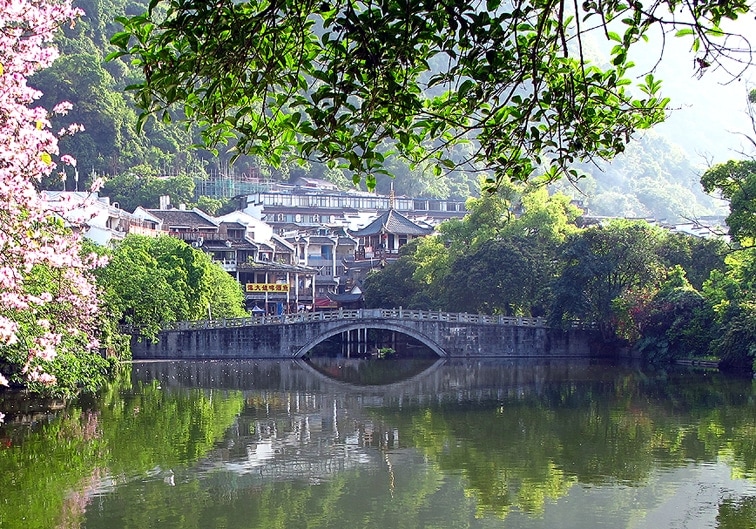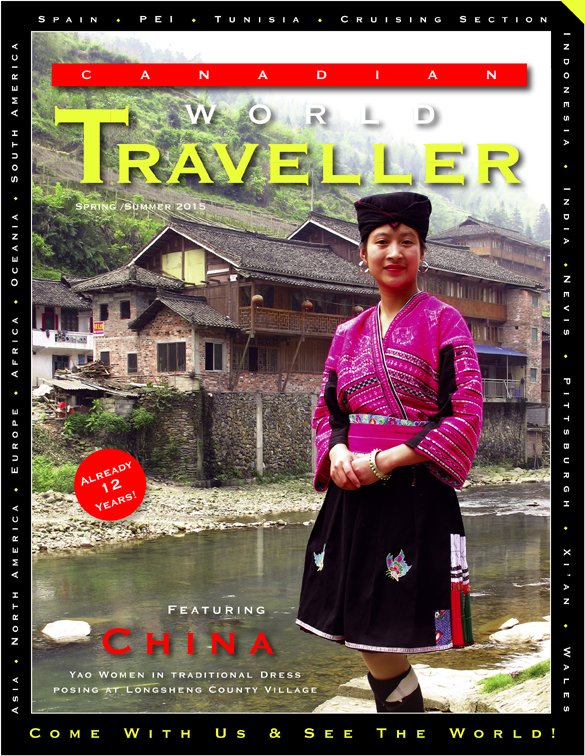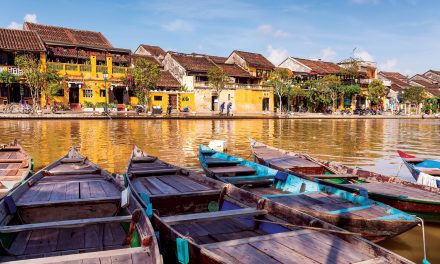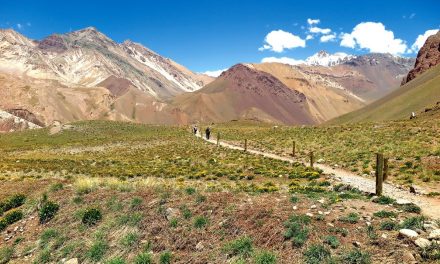China
Fairyland Tour of Guangxi Province
Article & Images by Michael Morcos

Maybe you can’t go home again, but you can re-visit a favorite! About a decade has passed since I last visited this beautiful and well visited part of china. Many, many changes have occurred in that time, and there are an ever growing numbers of tourists, and much to my delight, many are Chinese travelers out to visit and learn more about their own country.
Change comes quickly to China, so I figured this would be a good time to visit before it changes again!
Greatness of Guilin
Guilin is a beautiful city with the centre of town surrounded by two rivers and four lakes, and the sheer sided karst mountains as a protective shield. As the main industry is tourism, the city is very well kept. The main attraction is the surrounding karst terrain, with its limestone mountains eroded into fantastic shapes that dazzle the mind. Rock climbers, spelunkers and cavern explorers will never be disappointed here!
The city and the surrounding region are among the most scenic areas in China, and are popular tourist destinations for travelers of all sorts due to the myriad of adventures to be had. A walk came first, as a visit to Elephant Trunk Hill. This landmark is a 50 meter high hill that time has sculpted into the figure of a giant elephant leisurely sipping water from the river with its long trunk, and is regarded as the symbol of Guilin city because of its natural beauty.
Later in the afternoon, and just a short trip out of the city lies The Reed Flute Cave, a natural limestone cave with multicolored lighting that has been one of Guilin’s most interesting attractions for over 1200 years. The cave is over 180 million years old and was named because of the abundance of reed plants present around it, reeds used by the locals to make flutes.
A haven for spelunking enthusiasts, the water-rich cave has an abundance of wonderful formations like stalactites, stalagmites, rock formations, and stone pillars.
The tour lasts for about an hour, and tourists often enjoy the various names given to the rock formations like Dragon Pagoda, Crystal Palace, Virgin Forest, Fruit Mountains, Flower, among others. Luckily, taking pictures is allowed inside the cave as long you don’t use a flash!
Our dinner consisted of the well known Guilin cuisine and its use of spices. Guilin chili sauce is made of fresh chili, garlic, and fermented soybeans, and is considered one of the city’s Three Treasures. The other two of are Guilin Sanhua Jiu, a variety of rice baijiu, or liquor distilled from rice as well as Guilin pickled tofu. Odd and different, but it definitely woke up the taste buds!
After dinner we were out to visit some of Guilin’s most scenic spots by boat on a charming trip dubbed the ‘Dreams on Water’ tour, which cruises along the two rivers and four lakes that surround the city: Li river, Taohua river and Ronghu lake, Shahu lake, Guihu lake, Mulong lake. The Water-tour of Guilin started in Tang Dynasty (618-907), when there were many lakes and ponds throughout Guilin city, and has been popular ever since. The water system has been developed to make it easy for people to enjoy all the well-known scenic spots by a small boat. I would liken the tour to water-tours in cities like Venice, Paris and Amsterdam. Leisurely and lovely, this was a great way to end the evening.
Our hotel was the Grand Link Hotel, located on the banks of the Li River, faces Elephant Trunk Hill across the river and is near both the Seven Star Park and ZiZhou Island Park. It is the only luxury garden resort hotel on the Li River and has a well deserved reputation for their lovely Spring, Summer, Fall and Winter-themed Gardens, surrounded by flowers. The staff were incredibly polite and knowledgeable, and with a fully equipped business center and swimming pool, there was everything needed to wind up the night.
Guilin to Yangshuo
The next day we spent exploring the Li River by going to the Zhujiang Pier for a 4-hour cruise, a sightseeing tour in Guilin with lunch aboard the boat. Lunch was themed as a seafood extravaganza, and was made of amazing, freshly cooked foods from the country side by local farmers and fresh fish sold straight from the riverside fishermen.
It was a very unique trip, as the river is now full of boats all doing the same trip, but as we were the only westerners on the boat, we were treated like friends – and even as royalty – by the Chinese travelers along the ride with us!
All through the ride we were treated to the view of beautiful mountains, verdant fields, many farms and villages with water buffalos and cows wandering around both sides of the river bank. As a testament to the changes that have happened over the years since I last visited, our stopover in the old town of Yangshuo told the story of change better than anything else. The Yangshuo I remembered had small dirt streets that are now paved, the markets have grown and become slightly more upscale with the influx of wealthy Chinese and foreigners. The pier and the port area is now very large and can accommodate for large numbers of tourists. As busy and bustling as the area is, it still pales in comparison to the breathtaking views of the surrounding mountains and lakes.
After another great meal with local flavor, I was lucky enough to catch the show “Impression Liu San Jie” for a second time – and it was just as dazzling. The performance boasts both modern and classical music played by famous musicians of China with more than 600 performers, all of whom are local people of the Li River area. They present the reality of life for the people in through their wonderful performances. The work of the river folk is represented through color and sound.
The first chapter is the Red Impression: Folk Songs. On the water, many fishermen are rowing their bamboo rafts in a column. Either standing or squatting, they hang the large red silk in the sky and or upon the water. This red picture symbolizes the enthusiasm and praises the labors of the local people. In the climax, fishing rafts are rowed farther and farther from the audience while the beautiful songs of Sanjie are still echoing among the hills. Moving and impressive. The sheer scope is something to behold!
Longsheng County
After breakfast, we drove about 2 hours to Longsheng County and a fantastic way to see rural China. We were treated to a traditional Yao song and dance, and then certain male members of the audience were brought on stage for a wedding ceremony to a local Yao woman!
It was a very entertaining and comical spectacle seeing a person from our group getting a Yao wife! Six years ago it was my turn, so it was nice to watch it unfold to someone else. I was a little sad as I noticed my Yao wife of years ago, but she failed to recognize me!
The ceremony itself is quite lovely, and the dress of the Yao brides (black with colorful trim) is quite striking. The women in actual marriage let their hair grow very long and cut it only when they get married.
Afterwards we got a chance to buy lots of locally made arts and crafts for gifts at very reasonable prices and lunch was a treat, as the local cuisine is quite different from other Chinese dishes, and absolutely fantastic!
Last call at the Longji Terraces
Built along the slope and winding up from the riverside to the mountain top, between 600 m to 800 m above sea level, the Longji Terraces is also called Dragons Backbone Rice Terraces. The name is derived from the terraces that resemble a dragon’s scales and the summit of the mountain range looks like the backbone of a dragon. We enjoyed a day of hiking tours around Pingan village, renowned for the amazing views and scenery. The site was right out of a fairytale, and I felt like spending the whole day there!
Time does not stand still
Six years back home is change enough, but revisiting this magnificent part of China sure brought some perspective. Whether noticing the bigger markets, the longer waits and bigger crowds, the Dragon has truly awoken!
www.tourismchina.org
Click on cover to view published article


















